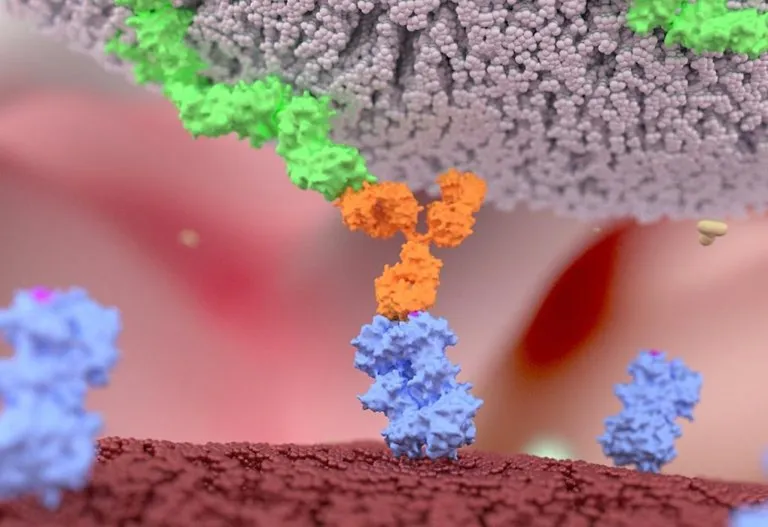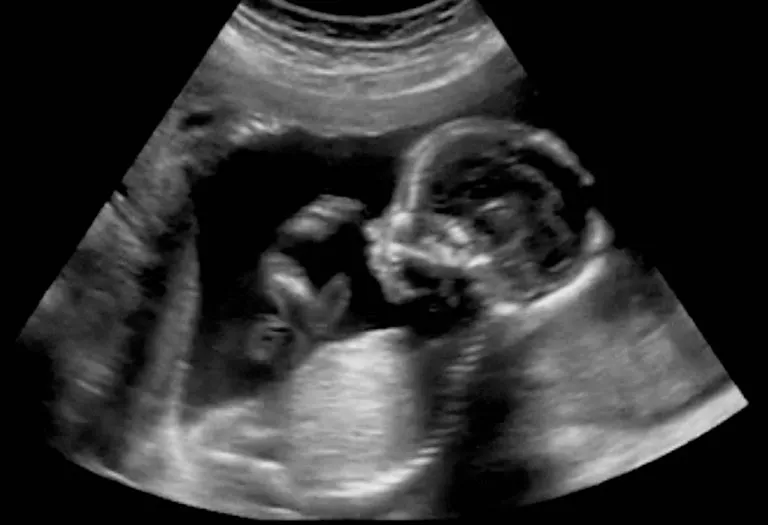Products of Conception – Signs, Diagnosis and Treatment
The news of pregnancy is a beautiful time for many, but for some, it may be an unplanned arrival or may be rife with complications that lead to premature labour or a miscarriage. In each case, the removal of the foetus or baby removes almost all the tissues, but sometimes, that is not the case.
Products of conception, also known as retained products of conception or RPOC, is a medical term that describes foetal or placental tissue that remains inside the uterus after a miscarriage, term or preterm delivery or planned termination of pregnancy. Read on to learn more about retained products of conception, their symptoms, diagnosis, and various treatment measures.
What Is Meant by Products of Conception?
RPOC, or retained products of conception, meaning the fetal tissue and any placental or other kinds of tissue of the fertilised egg that may remain in the uterus post-medical or surgical termination of pregnancy, miscarriage or caesarean or vaginal delivery, is a medical term used by doctors (1). Any product of conception post a miscarriage or termination of pregnancy is called an incomplete miscarriage.
Who Is at Risk of Experiencing Retained Products of Conception?
To understand the symptoms of RPOC, it is first essential to understand what can cause this medical condition and who is at risk of experiencing it. The following cases increase the risk of retained conception products in the uterus:
- A medical history of recurring retained placenta in the uterus during previous pregnancies. This condition poses the highest risk of experiencing RPOC.
- If you experience placenta accreta, a condition where the placenta attaches itself to the walls of the uterus too tightly.
- Where the age of the pregnant woman is above the age of 35.
- A delivery, abortion, or miscarriage that occurs after the second trimester of pregnancy, anywhere between 12-26 weeks.
- Prolonged or heavy use of oxytocin.
- Labour that lasts more than 14 hours, which is also known as Failure to Progress (FTP).
- History of C-section in a past pregnancy or a uterine surgery.
- A congenital uterine defect.
- If you have been pregnant before but did not give birth to a baby, also called Nulliparity (2)
Products of Conception During a Pregnancy Loss
If a woman has had an early miscarriage, it may be impossible to establish the foetus from the placenta until a pathologist identifies the same. However, in the case of a miscarriage that happens further along with the pregnancy, the tissues take a more distinct and definitive shape. However, all the tissues are still termed as ‘products of conception’.
If you have undergone any dilation and curettage, also known as D&C, after an incomplete miscarriage, you must be familiar with the term RPOC. Doctors use the process of D&C, which involves dilating your cervix to remove or get rid of any tissues or products of conception that remain after an incomplete miscarriage (3). In most cases, it is hard to establish what is left behind during an ultrasound; therefore, a more comprehensive term, such as RPOC or products of conception, is used by doctors.
How Common Is RPOC?
According to one of the studies, retained products of conception can be present in approximately 40 per cent of cases after the second-trimester delivery. However, the percentage was 17 per cent and 2.7 per cent in the first and third trimesters respectively. RPOC may occur more frequently in case of placenta accretion, MTP medical termination of pregnancy or second-trimester miscarriage. It is also observed that products of conception can complicate approximately 1 to 5 per cent of vaginal deliveries (1).
What Are the Symptoms of Retained Products of Conception?
If there is any tissue that is present in your uterus post a planned termination of pregnancy, miscarriage or preterm or term delivery. In that case, they are termed as the products of conception. If there are any RPOC or retained products of conception, it would mean that you have had an incomplete miscarriage. Here are some signs or symptoms you may experience in the case of RPOC.
1. Delay in the Menstrual Cycle
If your menstrual cycle does not start within six weeks, it could be because of RPOC.
2. Pelvic Pain, Fever, and Tenderness in the Uterine Region
If you notice any of these symptoms, you may have some infection and symptoms of RPOC.
3. Uterine Bleeding
It is normal to experience bleeding after a miscarriage. But if the bleeding is heavy, you notice clots in the bleeding, or the bleeding happens for a prolonged duration (more than three weeks), all these may indicate infection and are a sign of RPOC (4).
Registering any of the above mentioned signs or symptoms can be a sign of complication, and you must seek medical assistance immediately.
How Is It Diagnosed?
Here are some techniques that your doctor may use to establish RPOC:
- Ultrasound: Conducting retained products of conception ultrasound is usually one of the first investigation techniques that your doctor may aim to establish the following:
-
- Any heterogenous or echogenic material may be present in the endometrial cavity.
- Any vascularity that may be present within the echogenic material. However, in the absence of colour Doppler flow, the results can show very low negative predictive value, as sometimes the RPOC may be avascular.
- In some cases, the products of conception may present, such as intrauterine or endometrial mass.
This imaging technique can be successful in establishing retained products of conception if the endometrial thickness is less than 10 mm after a spontaneous abortion or D&C (dilatation and curettage) (5).
- MRI: This test provides a more variable appearance because the tissues in the endometrial cavity may be variably enhancing, which means there may be variable degrees of obliteration or myometrial thinning of the junctional zone (6). Some signal characteristics may include:
- T1 – showing variable heterogeneous signal
- T2 – showing variable heterogeneous signal
- T1 C (Gd) – showing variable enhancement
- Lab tests: Your doctor may conduct lab tests to establish any retained conception products in your uterus that may include blood tests.
- Hysteroscopy: In some cases, your doctor may ask you to undergo hysteroscopy, in which a thin, lighted tube, known as a hysteroscope, is inserted in the vagina to establish any placental or fetal tissues (7).
Depending on your diagnosis, your doctor may opt for the correct method of treatment of RPOC.
Retained Products of Conception – Treatment and Medication
Various medical and surgical treatments can help treat products of conception. Following are some of the treatment options for the removal of retained products of conception:
- The natural way: The most natural and best way to get rid of RPOC is to wait for the body to expel them naturally without any problem. This is not only the most inexpensive approach to treatment but also the least invasive one.
- D&C or dilatation and curettage: This is the most widely used surgical procedure. You can opt for this method to stop or avoid heavy bleeding. In this process, the cervix is opened up using some medication and medical instruments. The surgeon scrapes the sides of the uterus to collect the retained products of conception. This procedure is usually highly safe and is performed under general anaesthesia. However, in approximately 20 percent of the cases, this treatment method may lead to severe haemorrhage in the patients. Other side effects may include bleeding, cervical damage, infection, retained products of conception after D&C, etc.
- Use of medication: Your doctor can administer medication that can be taken orally or vaginally. One of the widely used medicines includes misoprostol, which was initially used for treating ulcers; however, now it is used for treating various obstetric conditions, too. The medicine has a success rate of 80 to 99 per cent in pregnancies with a gestational age of 13 weeks or less. However, this method may not yield fruitful results for some women, and D&C may be required. Taking this medication may sometimes lead to the risk of blood loss, but it also lowers your risk of adhesions post an RPOC, after medical abortion or D&C.
FAQ
1. Which is the most effective method to remove RPOC?
The location, amount, and severity of Retained Products of conception dictate what extraction method to select. Always consult a medical expert who will examine you to ascertain the most viable method with the least risk.
Discuss your worries and concerns with your doctor to determine the best management and treatment options. Take your time to learn about retained products of conception and ensure all your queries and worries are taken care of.
Miscarriage or medical abortion can be emotionally and physically draining for a woman, and if you experience RPOC during the procedure, you are likely to be stressed and anxious. However, keeping calm and deciding what best suits your medical condition is essential for good health.
References/Resources:
1. Sellmyer, M.A., Desser, T.S., Maturen, K.E., Jeffrey, R.B. Jr., and Kamaya, A.; Physiologic, histologic, and imaging features of retained products of conception; Radiographics; https://pubmed.ncbi.nlm.nih.gov/23674774/; May 2013
2. Retained Products of Conception; Cleveland Clinic; https://my.clevelandclinic.org/health/diseases/21512-retained-products-of-conception
3.Dilation and Curettage (D&C); Mayo Clinic; https://www.mayoclinic.org/tests-procedures/dilation-and-curettage/about/pac-20384910
4. Retained Placenta; Tommy’s Organisation; https://www.tommys.org/pregnancy-information/pregnancy-complications/retained-placenta
5. Iqbal, H., Khan, M.S., Muneeb, A., and Mirza, W.A.; Diagnostic Accuracy of Ultrasound in Detecting Retained Products of Conception: A Study from a Tertiary Care Hospital in Karachi, Pakistan; Cureus; https://www.ncbi.nlm.nih.gov/pmc/articles/PMC6325029/; November 2018
6. Gupta, R., Bajaj, S.K., Kumar, N., Chandra, R., Misra, R.N., Malik, A., and Thukral, B.B.; Magnetic resonance imaging – A troubleshooter in obstetric emergencies: A pictorial review; Indian J Radiol Imaging; https://www.ncbi.nlm.nih.gov/pmc/articles/PMC4813073/; January 2016
7. Diagnostic Hysteroscopy In Retained Products Of Conception (RPOC); The International Society for Gynecologic Endoscopy; https://www.isge.org/2023/04/diagnostic-hysteroscopy-in-retained-products-of-conception-rpoc/
Also Read:
Pregnancy After an Abortion
Dealing With Period After Abortion
Things to Take Care After an Abortion
Was This Article Helpful?
Parenting is a huge responsibility, for you as a caregiver, but also for us as a parenting content platform. We understand that and take our responsibility of creating credible content seriously. FirstCry Parenting articles are written and published only after extensive research using factually sound references to deliver quality content that is accurate, validated by experts, and completely reliable. To understand how we go about creating content that is credible, read our editorial policy here.























